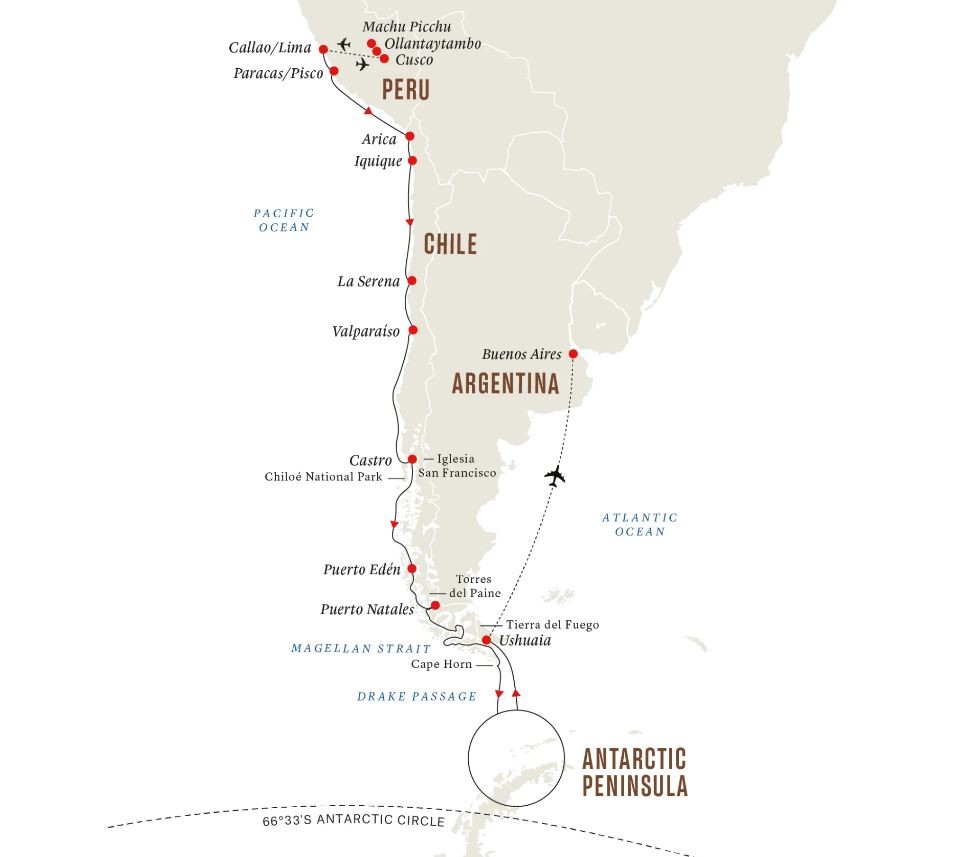Imagine this: you’re standing amidst the ethereal mist of Machu Picchu, the ancient Incan citadel that rises majestically from the Andes, only to have your gaze drawn southward to the wild, rugged landscapes of Patagonia. Does it get any better than this? Combining these two breathtaking destinations into a single trip might sound enticing, yet it also poses a tantalizing challenge: how do you craft an itinerary that does justice to both of these South American wonders? With careful planning, it’s entirely feasible to experience the grandeur of Machu Picchu and the untamed beauty of Patagonia in one exhilarating journey.
First, let’s explore the invigorating highlands of Peru. Machu Picchu, often synonymous with adventure, is a must-see for avid explorers and culture enthusiasts alike. This UNESCO World Heritage site, steeped in history, beckons travelers to unravel its mysteries. The experience begins in the bustling town of Aguas Calientes, the gateway to Machu Picchu. Once you’ve settled into your lodgings, embark on a stimulating hike either via the Inca Trail or the scenic train ride that leads you through verdant valleys and past ancient ruins.
The Inca Trail, while demanding, offers unparalleled views and an immersive experience into the ancient Incan civilization. Picture yourself traversing the very paths that Incas once walked, surrounded by the greenery of the Andes and the captivating sounds of nature. For those seeking a less strenuous approach, the train ride is equally rewarding, with panoramic views that bring the rich landscapes to life. Don’t forget your camera; each frame blossoms with photo opportunities, from the breathtaking Sun Gate to the hidden treasures of the Lost City itself.
Once at Machu Picchu, take your time to soak in the ambiance. The exquisite ruins, such as the Temple of the Sun and the Intihuatana stone, invite you to reflect and dream about the lives of those who once inhabited this remarkable site. As you wander through this majestic enclave, consider the historical relevance and architectural genius behind the stone structures that have withstood the test of time. This isn’t just a destination; it’s a portal to the past.
But, what comes after Peru? Here’s where the challenge begins: how do you transition from the heights of the Andes to the sprawling ice fields of Patagonia? The answer lies in strategic planning, beginning with your next destination. Opt for a flight to either El Calafate or Punta Arenas, both excellent launchpads into the stunning landscapes of Patagonia. The contrast is striking, reminiscent of the duality of nature itself—a juxtaposition that energizes the spirit.
Patagonia—an alluring name that evokes visions of dramatic glaciers, towering mountains, and windswept plains. One of the most iconic spots in Patagonia is Los Glaciares National Park. Here, the spellbinding Perito Moreno Glacier captivates visitors as it cleaves and calves, sending towering icebergs tumbling into azure waters. Consider taking a boat tour to get up close and personal with this ice giant or perhaps challenge yourself to hike on its surface, an exhilarating experience like no other.
Venture further into Torres del Paine National Park, known for its stunning granite peaks, azure lakes, and varied wildlife. The iconic trio of Torres, or Towers, dominate the landscape, beckoning adventurers to explore the myriad of hiking trails that wind through the park. Whether you’re a seasoned trekker or a casual wanderer, the beauty of Patagonia offers something for everyone—immersing you in nature’s sheer magnificence.
Does this blend of serene mountain lakes, rugged cliffs, and vast plains drive you to dream of sunset hikes along the Emerald Lake or stargazing beneath the Southern Hemisphere skies? Whether you’re reveling in the excitement of wildlife spotting or sampling local cuisine from rustic eateries, your visit to Patagonia will bolster your connection to nature.
A common question arises: How can one sufficiently grasp the cultural richness of both locales? In Cusco, a vibrant city pulsating with history, your journey begins. Allow yourself to indulge in the local Peruvian dishes like ceviche or alpaca steak, harmonizing with the Andes’ flavors. Then, contrast this culinary experience with the Patagonian cuisine, where lamb and seafood take center stage, always prepared with a splash of local flair. Engaging with local communities, whether it be through workshops or guided outings, will enrich your visit, providing deeper insight into the heritage and traditions woven through the fabric of these regions.
As you gather memories from both Machu Picchu and Patagonia, contemplate the logistics: timing and transportation can indeed be tricky. Opt for the shoulder seasons, usually April to June or September to November, to dodge the heaviest tourist crowds while still enjoying favorable weather. The flights between Peru and Patagonia can be elusive, requiring patience and flexibility. Consider working with travel specialists who can finely tailor your journey to maximize your adventure.
Ultimately, the combination of Machu Picchu and Patagonia is not merely a trip; it’s an odyssey through South America’s untamed heart. Whether you’re scaling the peaks of the past or wandering through the wild expanse of the present, both places offer profound insights that resonate long after your journey concludes. So, pack your bags not just for visiting but for experiencing, exploring, and embracing the thrill of discovery that awaits in this vast and vibrant land.
